Pigment
Pigment is a kind of white or colored fine powdery substance and is insoluble in medium such as water or oil, and can be uniformly dispersed in the medium. In this system, the pigment can be used as dispersed phase with the medium being the continuous phase. When mixed with various kinds of media (including color development agent) together, it enables the coloring of the object, and the pigment itself is not dissolved in coloring matter and can also make the object exhibit a certain color, such substances is called as pigments. Some literature also confine that the pigment should not chemically react with the coloring matter. With the progress of science and technology, this definition has been broken, because there can be certain chemical reaction occurring between some pigments and the coloring matter. As a kind of pigment, it should have appropriate color (including white), coloring strength, hiding capacity, a high degree of dispersion, light stability and vivid color.
Based on the chemical composition, it is divided into inorganic and organic pigments;
According to its color, it is classified into white, red, yellow, black and other pigments;
According to the sources, it can be divided into natural and synthetic pigments; natural pigments can be further divided into animal pigment, plant pigment and mineral pigments. Mineral pigment (inorganic) includes ocher, cinnabar, red clay, realgar and so on. Animal and plant (organisms) type include Garcinia and cochineal red; synthesis pigments also have organic and inorganic pigments, two major categories.
According to the application, it can be divided into coloring pigment, extender pigments and functional pigments. Coloring pigment is the inorganic or organic pigments that endow the media with various kinds of colors; extender pigment is a non-coloring and non-hiding pigments. In early time, it was mainly used to reduce product cost and improve the performance of coatings, plastics, rubber and other products, and thus also being called filler.
Now there are natural products and synthetic products that have processed into ultrafine-grained grade. The synthetic product has low impurity content, fine particles and can be artificially synthesized and further subject to various kinds of surface modification as needed. Owing to these advantages, it can be further used to reduce the usage amount of paint of opacity (such as titanium dioxide) and improve the product performance. Therefore, it is more suitable to call it extender (incremental) pigment. The major varieties of extender pigments are mostly processed natural minerals such as natural calcium carbonate, barite powder, talcum powder, mica powder, diatomaceous earth, quartz powder, clay and asbestos. A small number of them are synthetic products such as precipitated calcium carbonate, precipitated barium sulfate, synthetic silica; functional pigments are pigments to endow the product with particular functions. For example, the temperature-indicating paint can enable the color change of the product according to the temperature; anti-fouling pigment is able to poison and kill the aqueous creatures; luminous pigment can emit in the dark; anti-rust pigment can prevent the corrosion; pearlescent pigments exhibit pearl luster.
The differences between pigment and dye are as below: dye can be dissolved in the medium with some of them even being able to be dissolved in the dyed product and can make the dyed product being colored only after the chemical reaction between them occurring. However, they two can sometimes be interoperable, e.g., some of the anthraquinone dyes can be used as both dyes and pigments; sometimes pigments and dyes can be converted to each other; for example, we can convert the dye to insoluble lake to be used as a pigment . Pigment is a kind of indispensable raw material in the painting industry. In addition, it is also widely used in the printing industry, rubber industry, plastics industry, chemical industry, paper industry, ceramic industry, glass industry, ceramic industry, printing and dyeing industry, building materials industry, inks, paints, color lead (wax) pen, makeup pigment and so on. It can endow the products with decorative property, opacity, durability or special function. With advances in technology, various kinds of high performance pigments will be further developed.
- Structure:
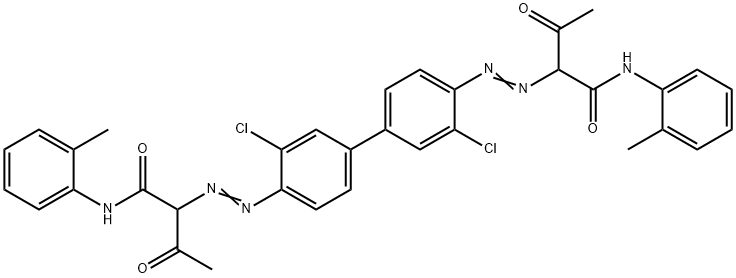
- Chemical Name:Pigment Yellow 14
- CAS:5468-75-7
- MF:C34H30Cl2N6O4
- Structure:

- Chemical Name:Pigment Yellow 83
- CAS:5567-15-7
- MF:C36H32Cl4N6O8
- Structure:
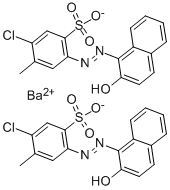
- Chemical Name:Pigment Red 53:1
- CAS:5160-02-1
- MF:C34H24BaCl2N4O8S2
- Structure:
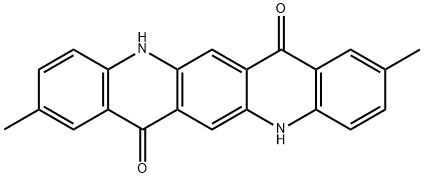
- Chemical Name:Pigment Red 122
- CAS:980-26-7
- MF:C22H16N2O2
- Structure:
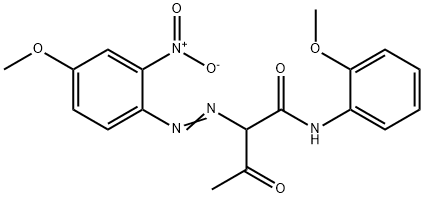
- Chemical Name:Pigment Yellow 65
- CAS:6528-34-3
- MF:C18H18N4O6
- Structure:
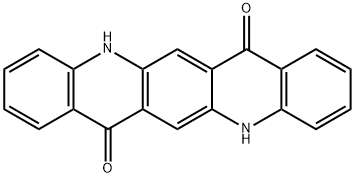
- Chemical Name:Quinacridone
- CAS:1047-16-1
- MF:C20H12N2O2
- Structure:

- Chemical Name:Carbon Black
- CAS:1333-86-4
- MF:C
- Structure:
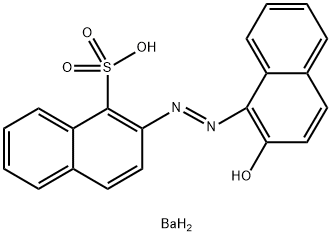
- Chemical Name:Pigment Red 49:1
- CAS:1103-38-4
- MF:C20H16BaN2O4S
- Structure:
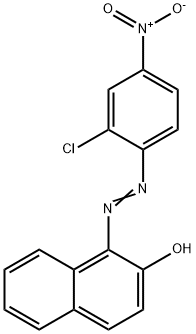
- Chemical Name:Pigment Red 4
- CAS:2814-77-9
- MF:C16H10ClN3O3
- Structure:
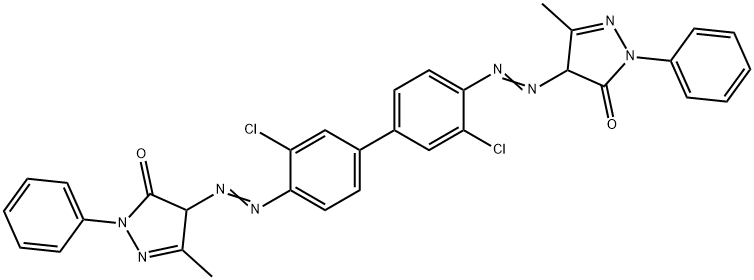
- Chemical Name:Pigment Orange 13
- CAS:3520-72-7
- MF:C32H24Cl2N8O2
- Structure:
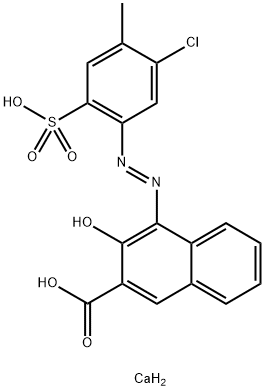
- Chemical Name:Pigment Red 48:2
- CAS:7023-61-2
- MF:C18H15CaClN2O6S
- Structure:
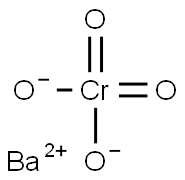
- Chemical Name:Barium chromate
- CAS:10294-40-3
- MF:BaCrO4
- Structure:
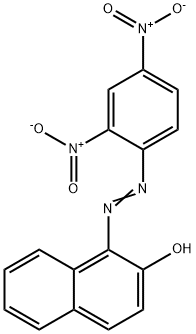
- Chemical Name:Pigment Orange 5
- CAS:3468-63-1
- MF:C16H10N4O5
- Structure:
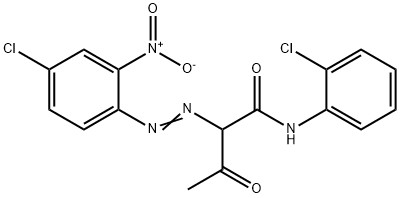
- Chemical Name:Pigment Yellow 3
- CAS:6486-23-3
- MF:C16H12Cl2N4O4
- Structure:
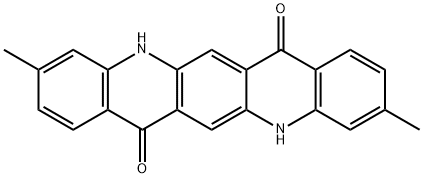
- Chemical Name:Pigment Red 122
- CAS:16043-40-6
- MF:C22H16N2O2
- Structure:
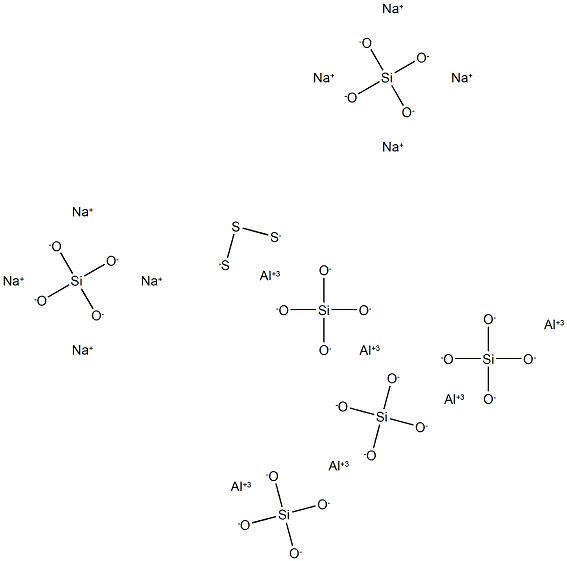
- Chemical Name:Pigment Blue 29
- CAS:57455-37-5
- MF:Al6Na8O24S3Si6
- Structure:
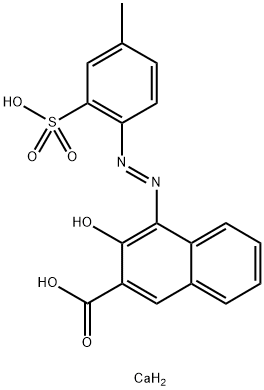
- Chemical Name:Pigment Red 57:1
- CAS:5281-04-9
- MF:C18H16CaN2O6S
- Structure:
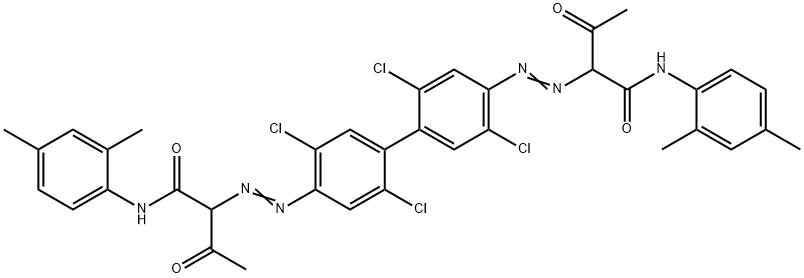
- Chemical Name:Pigment Yellow 81
- CAS:22094-93-5
- MF:C36H32Cl4N6O4
- Structure:
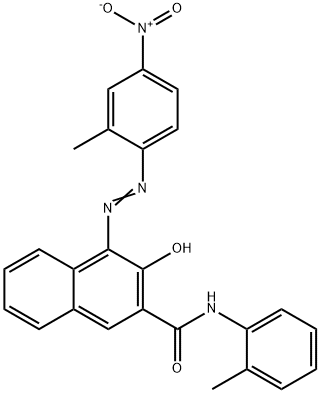
- Chemical Name:Pigment Red 12
- CAS:6410-32-8
- MF:C25H20N4O4
- Structure:
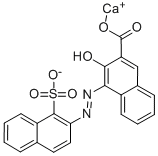
- Chemical Name:Pigment Red 63:1
- CAS:6417-83-0
- MF:C21H12CaN2O6S
- Structure:
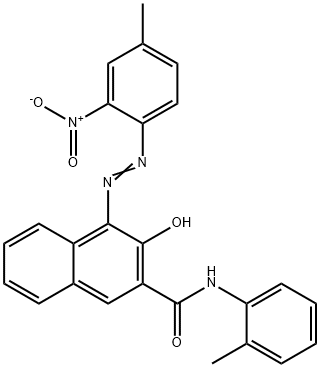
- Chemical Name:Pigment Red 13
- CAS:6535-47-3
- MF:C25H20N4O4
- Structure:
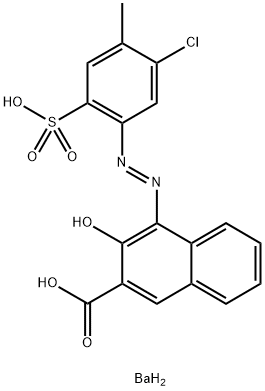
- Chemical Name:Pigment Red 48:1
- CAS:7585-41-3
- MF:C18H15BaClN2O6S
- Structure:
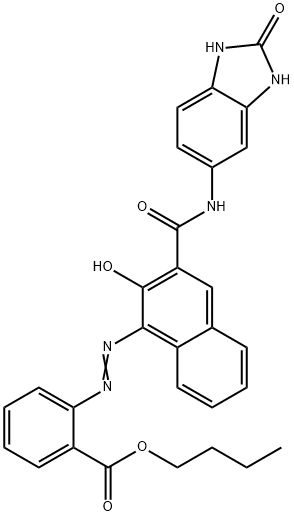
- Chemical Name:Butyl 2-[[3-[[(2,3-dihydro-2-oxo-1H-benzimidazol-5-yl)amino]carbonyl]-2-hydroxy-1-naphthyl]azo]benzoate
- CAS:31778-10-6
- MF:C29H25N5O5
- Chemical Name:Permanent Yellow 2GS
- CAS:
- MF:
- Structure:
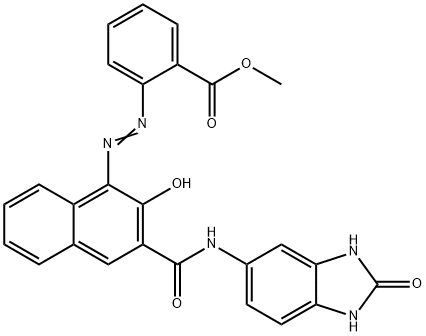
- Chemical Name:Pigment Red 175
- CAS:6985-92-8
- MF:C26H19N5O5
- Chemical Name:Acetylene black
- CAS:
- MF:
- Structure:
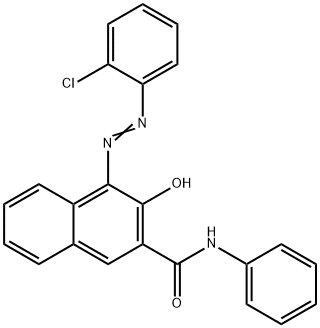
- Chemical Name:Pigment Red 21
- CAS:6410-26-0
- MF:C23H16ClN3O2
- Structure:
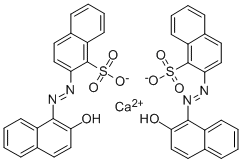
- Chemical Name:Pigment Red 49:2
- CAS:1103-39-5
- MF:C40H26CaN4O8S2
- Structure:
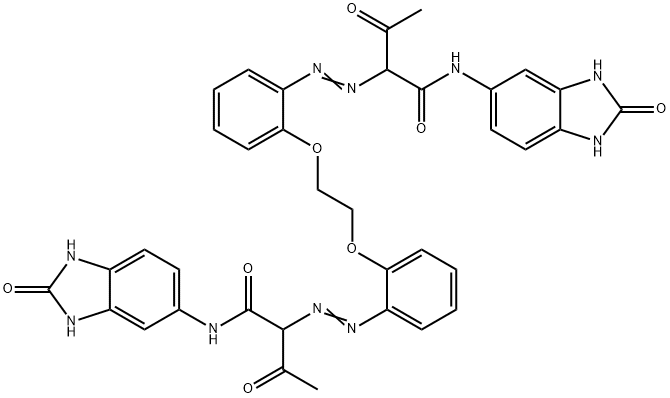
- Chemical Name:Pigment Yellow 180
- CAS:77804-81-0
- MF:C36H32N10O8
- Structure:

- Chemical Name:ARSENIC (III) SULFIDE
- CAS:1303-33-9
- MF:As2S3
- Structure:
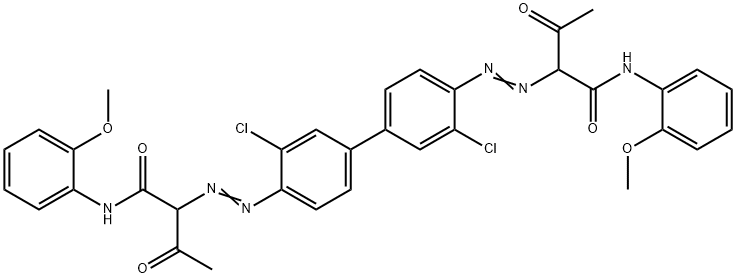
- Chemical Name:Pigment Yellow 17
- CAS:4531-49-1
- MF:C34H30Cl2N6O6
- Structure:
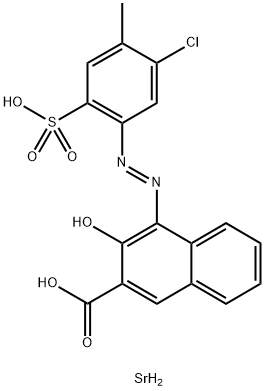
- Chemical Name:Pigment Red 48:3
- CAS:15782-05-5
- MF:C18H15ClN2O6SSr
- Structure:

- Chemical Name:Pigment Blue 27
- CAS:12240-15-2
- MF:C6Fe2KN6
- Structure:

- Chemical Name:Copper(II) phthalocyanine
- CAS:147-14-8
- MF:C32H16CuN8
- Structure:
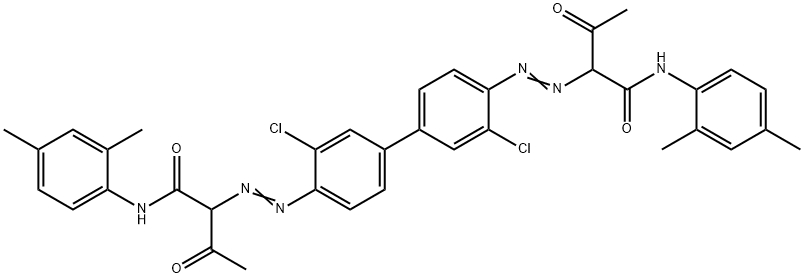
- Chemical Name:Pigment Yellow 13
- CAS:5102-83-0
- MF:C36H34Cl2N6O4
- Structure:
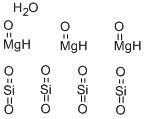
- Chemical Name:TALC
- CAS:13376-74-4
- MF:H2Mg3O12Si4
- Structure:
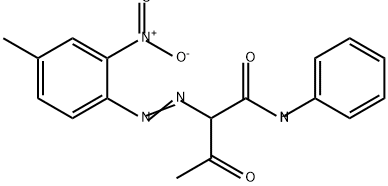
- Chemical Name:Fast Yellow G
- CAS:2512-29-0
- MF:C17H16N4O4
- Chemical Name:C-PHYCOCYANIN
- CAS:11016-15-2
- MF:
- Structure:
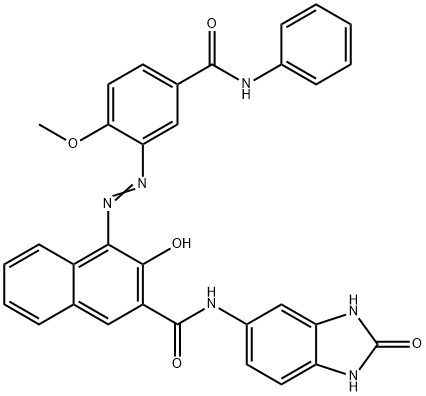
- Chemical Name:Pigment Red 176
- CAS:12225-06-8
- MF:C32H24N6O5
- Structure:
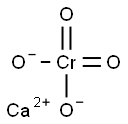
- Chemical Name:Calcium chromate
- CAS:13765-19-0
- MF:CaCrO4
- Structure:
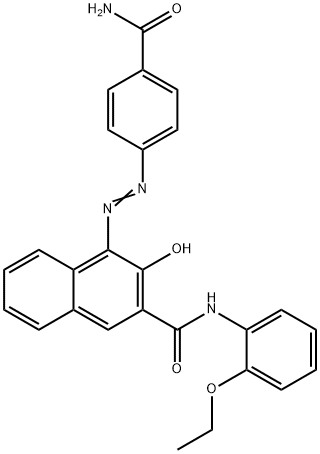
- Chemical Name:Pigment Red 170
- CAS:2786-76-7
- MF:C26H22N4O4
- Structure:

- Chemical Name:Permanent Violet RL
- CAS:6358-30-1
- MF:C35H23Cl2N3O2
- Structure:
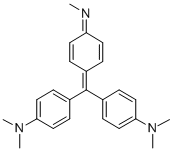
- Chemical Name:Pigment Violet 3
- CAS:1325-82-2
- MF:C24H27N3
- Chemical Name:Molybdate chrome red
- CAS:
- MF:
- Structure:
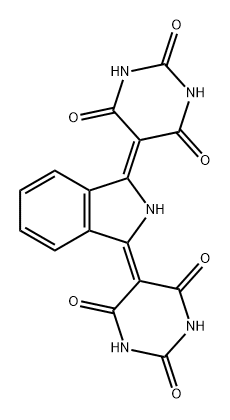
- Chemical Name:Pigment Yellow 139
- CAS:36888-99-0
- MF:C16H9N5O6
- Chemical Name:CI NO 77605
- CAS:12656-85-8
- MF:PbCrO4,PbMoO4,PbSO4
- Chemical Name:Ketjen Black carbon
- CAS:
- MF:
- Structure:
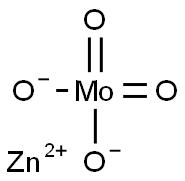
- Chemical Name:ZINC MOLYBDATE
- CAS:13767-32-3
- MF:MoO4Zn
- Structure:

- Chemical Name:Lithopone
- CAS:1345-05-7
- MF:BaO5S2Zn2
- Structure:
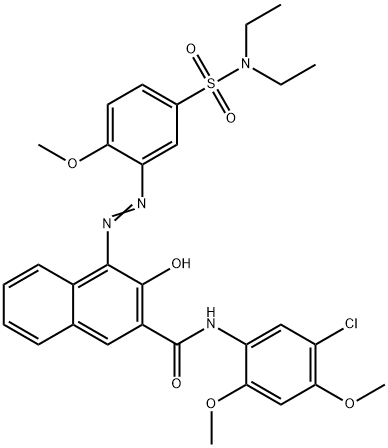
- Chemical Name:Pigment Red 5
- CAS:6410-41-9
- MF:C30H31ClN4O7S
- Structure:
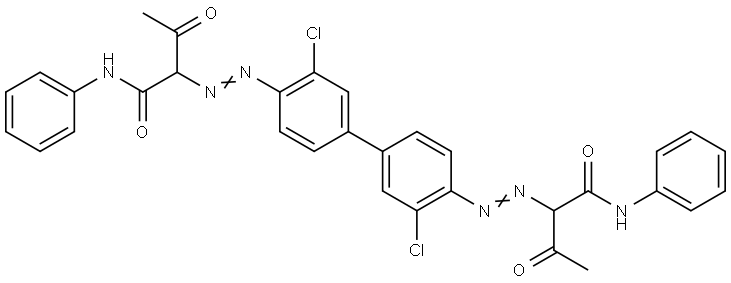
- Chemical Name:Pigment Yellow 12
- CAS:6358-85-6
- MF:C32H26Cl2N6O4
- Structure:
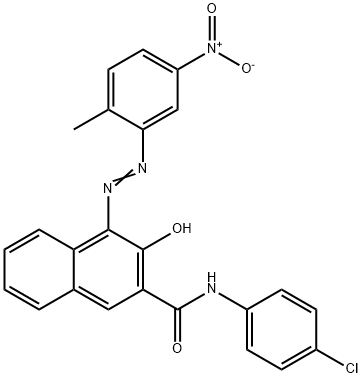
- Chemical Name:Pigment Red 8
- CAS:6410-30-6
- MF:C24H17ClN4O4
- Structure:
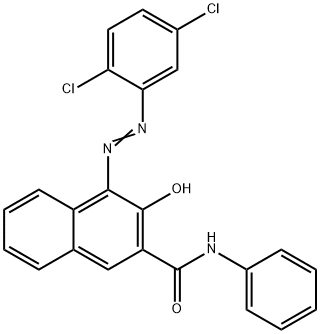
- Chemical Name:Pigment Red 2
- CAS:6041-94-7
- MF:C23H15Cl2N3O2
- Structure:
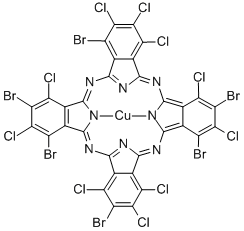
- Chemical Name:Pigment Green 36
- CAS:14302-13-7
- MF:C32Br6Cl10CuN8
- Chemical Name:Pigment Permanent Red F3RK
- CAS:
- MF:
- Chemical Name:Plastic brown
- CAS:
- MF:
- Chemical Name:Pigment Violet 19
- CAS:
- MF:C20H12N2O2
- Structure:
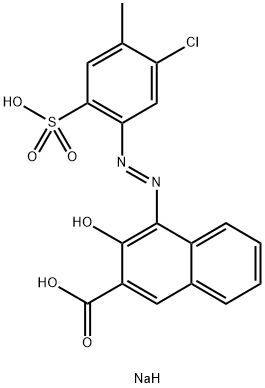
- Chemical Name:disodium 4-[(5-chloro-4-methyl-2-sulphonatophenyl)azo]-3-hydroxy-2-naphthoate
- CAS:3564-21-4
- MF:C18H14ClN2NaO6S
- Chemical Name:12 PIGMENT YELLOW 12
- CAS:
- MF:
- Chemical Name:Pigment Permanent Orange R
- CAS:
- MF:
- Chemical Name:Pigment Fast Jade Green Lake
- CAS:
- MF:
- Chemical Name:Plastic Colouring Agent
- CAS:
- MF:
- Structure:
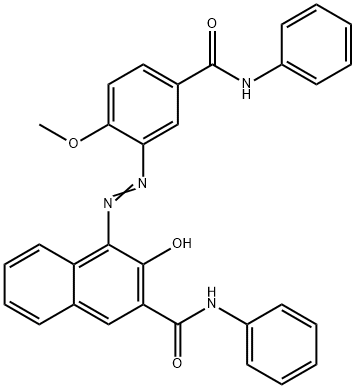
- Chemical Name:Pigment Red 32
- CAS:6410-29-3
- MF:C31H24N4O4
- Structure:
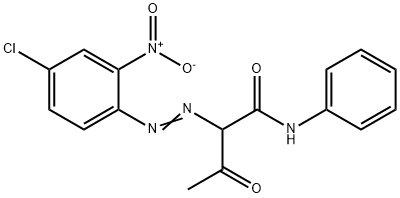
- Chemical Name:Pigment Yellow 6
- CAS:4106-76-7
- MF:C16H13ClN4O4
- Structure:
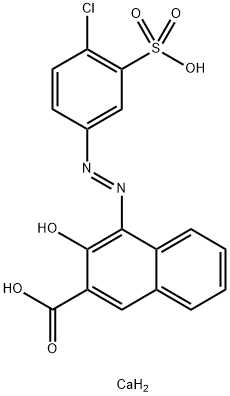
- Chemical Name:calcium 4-[(4-chloro-3-sulphonatophenyl)azo]-3-hydroxy-2-naphthoate
- CAS:7538-59-2
- MF:C17H13CaClN2O6S
- Structure:
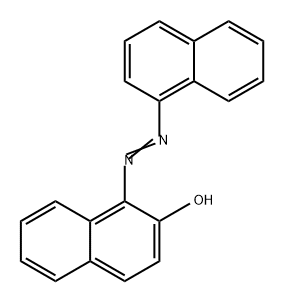
- Chemical Name:1-(1-naphthylazo)-2-naphthol
- CAS:2653-64-7
- MF:C20H14N2O
- Structure:
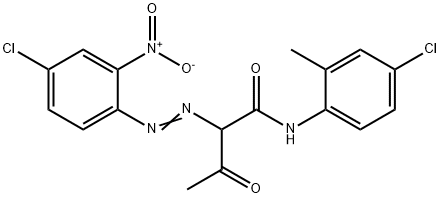
- Chemical Name:N-(4-Chloro-2-methylphenyl)-2-[(4-chloro-2-nitrophenyl)azo]-3-oxobutanamide
- CAS:32432-45-4
- MF:C17H14Cl2N4O4
- Chemical Name:Pearlescent pigment
- CAS:
- MF:
- Structure:
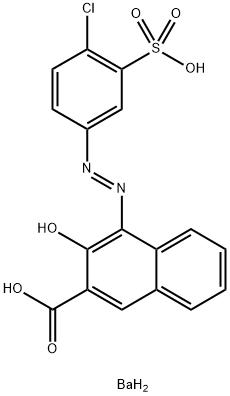
- Chemical Name:PIGMENT RED 58:1
- CAS:76613-71-3
- MF:C17H13BaClN2O6S
- Chemical Name:C. I. Solvent Yellow 14
- CAS:
- MF:
- Chemical Name:Pigment Fast Light Red Lake
- CAS:
- MF:
- Structure:
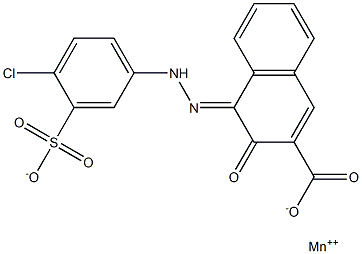
- Chemical Name:Manganese, 4-[(4-chloro-3-sulfophenyl)azo]-3-hydroxy-2-naphthalenecarboxylic acid complex
- CAS:52233-00-8
- MF:C17H9ClMnN2O6S
- Chemical Name:Spirit Light Fast Yellow GR
- CAS:
- MF:
- Chemical Name:Pigment Organic Medium Yellow
- CAS:
- MF:
- Structure:
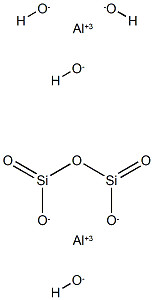
- Chemical Name:Kaolinite
- CAS:1318-74-7
- MF:Al2H4O9Si2
- Structure:
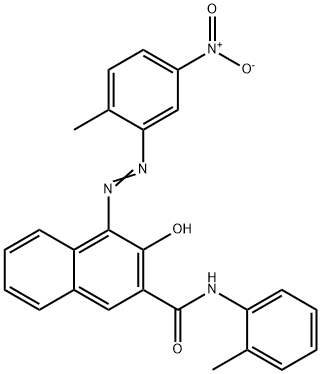
- Chemical Name:3-Hydroxy-4-[(2-methyl-5-nitrophenyl)azo]-N-(2-methylphenyl)-2-naphthalenecarboxamide
- CAS:6655-84-1
- MF:C25H20N4O4
- Structure:
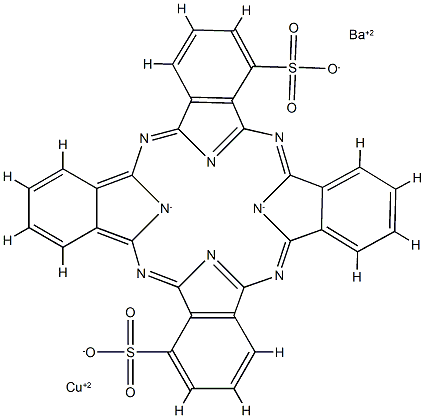
- Chemical Name:barium [29H,31H-phthalocyaninedisulphonato(4-)-N29,N30,N31,N32]cuprate(2-)
- CAS:67340-41-4
- MF:C32H14BaCuN8O6S2
- Structure:
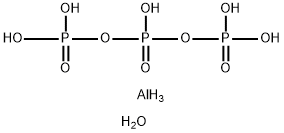
- Chemical Name:Aluminium dihydrogen tripolyphosphate
- CAS:17375-35-8
- MF:AlH10O11P3
- Structure:
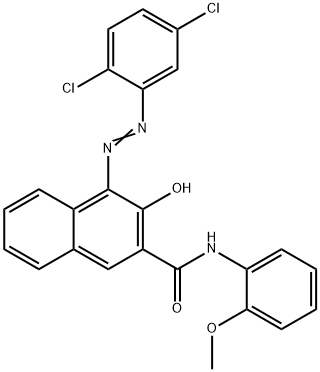
- Chemical Name:Pigment Red 9
- CAS:6410-38-4
- MF:C24H17Cl2N3O3
- Chemical Name:Pigment Organic Lemon Yellow
- CAS:
- MF:C16H9N4Na3O9S2
- Chemical Name:Praseodymium-Zircon Yellow
- CAS:
- MF:ZrSiO4-Pr
- Structure:
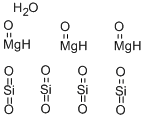
- Chemical Name:Talc
- CAS:14807-96-6
- MF:3MgO.4O2Si.H2O
- Structure:
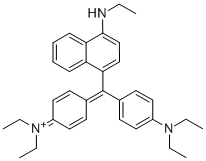
- Chemical Name:Pigment Blue 1
- CAS:1325-87-7
- MF:C132H161MoN12O11PW
- Structure:
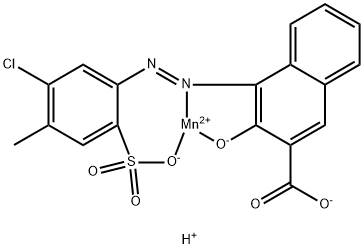
- Chemical Name:Pigment Red 48:4
- CAS:5280-66-0
- MF:C18H11ClMnN2O6S
- Structure:
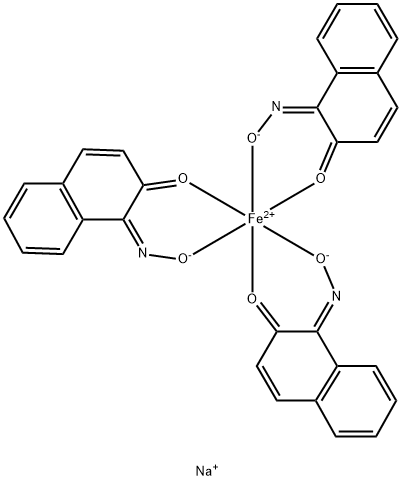
- Chemical Name:Pigment Green 8
- CAS:16143-80-9
- MF:C30H18FeN3NaO6
- Structure:
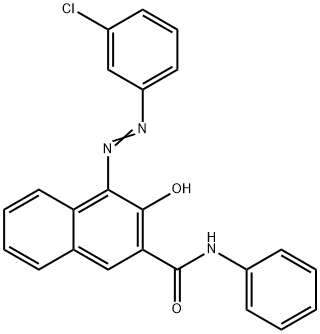
- Chemical Name:4-[(3-chlorophenyl)azo]-3-hydroxy-N-phenylnaphthalene-2-carboxamide
- CAS:6410-27-1
- MF:C23H16ClN3O2
- Chemical Name:Fast Yellow RX
- CAS:
- MF:
- Chemical Name:COBALT BLUE
- CAS:1345-16-0
- MF:CoO·Al2O3
- Structure:

- Chemical Name:KAOLIN
- CAS:1332-58-7
- MF:H2Al2O8Si2.H2O
- Structure:
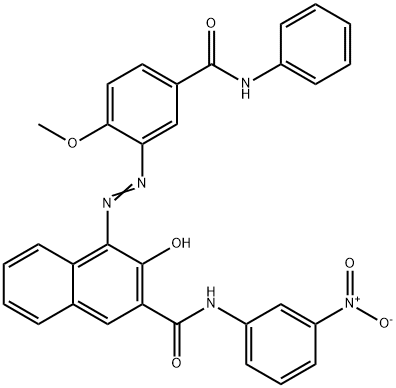
- Chemical Name:Pigment Red 31
- CAS:6448-96-0
- MF:C31H23N5O6
- Structure:
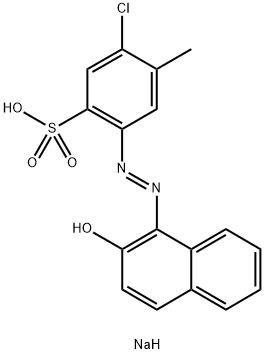
- Chemical Name:sodium 5-chloro-2-(2-hydroxy-1-naphthylazo)toluene-4-sulfonate
- CAS:2092-56-0
- MF:C17H14ClN2NaO4S
- Chemical Name:23 PIGMENT VIOLET 23
- CAS:
- MF:
- Chemical Name:Fast Pink lake
- CAS:
- MF:
- Chemical Name:Light Fast Rose Red Lake
- CAS:
- MF:
- Structure:
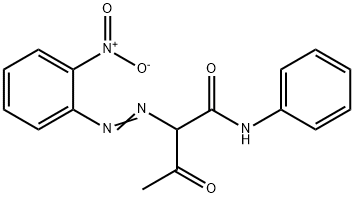
- Chemical Name:Pigment Yellow 5
- CAS:4106-67-6
- MF:C16H14N4O4
- Structure:
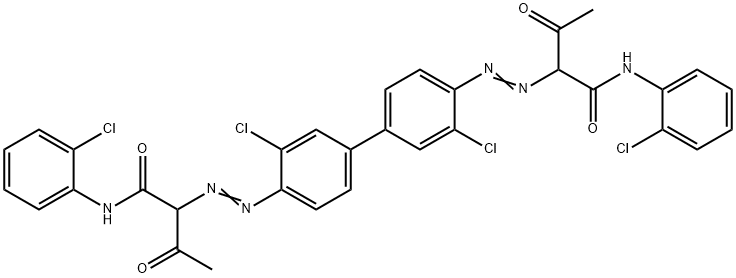
- Chemical Name:Pigment Yellow 63
- CAS:14569-54-1
- MF:C32H24Cl4N6O4
- Structure:
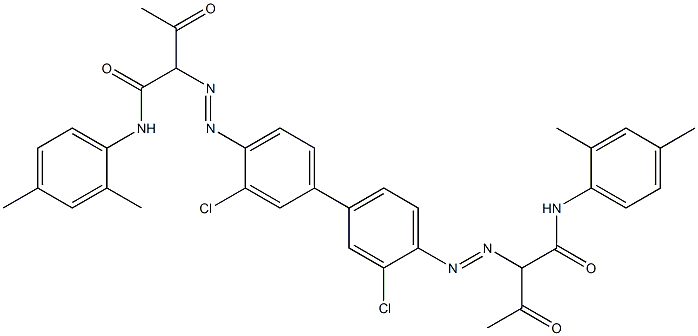
- Chemical Name:Benzidine Yellow GR
- CAS:61614-29-7
- MF:C36H34Cl2N6O4
- Structure:
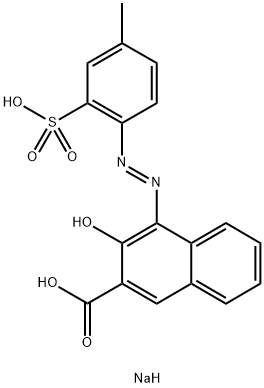
- Chemical Name:LITHOL RUBIN BCA
- CAS:5858-81-1
- MF:C18H15N2NaO6S
- Structure:
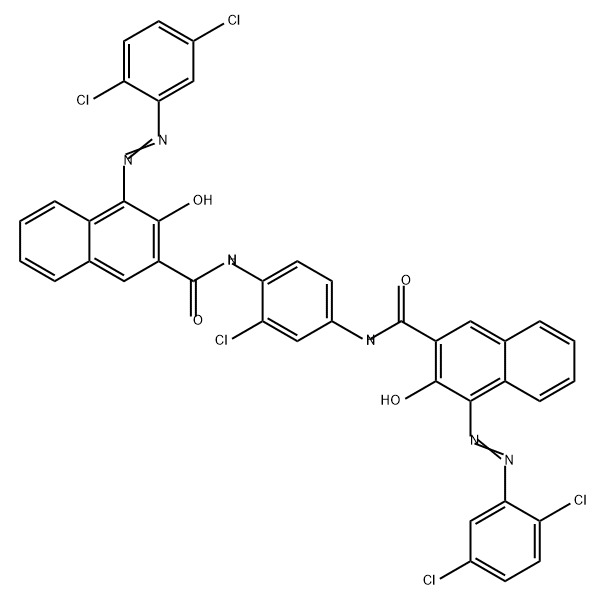
- Chemical Name:Pigment Red 144
- CAS:5280-78-4
- MF:C40H23Cl5N6O4
- Structure:
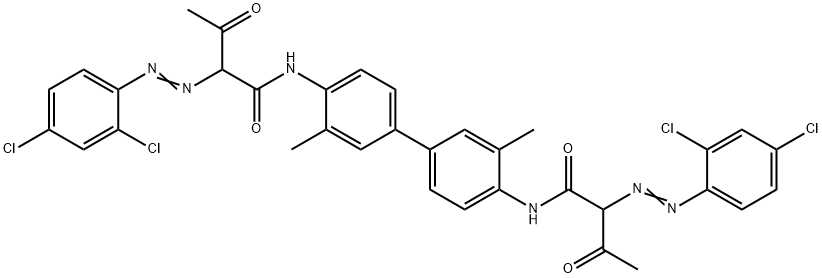
- Chemical Name:Pigment Yellow 16
- CAS:5979-28-2
- MF:C34H28Cl4N6O4